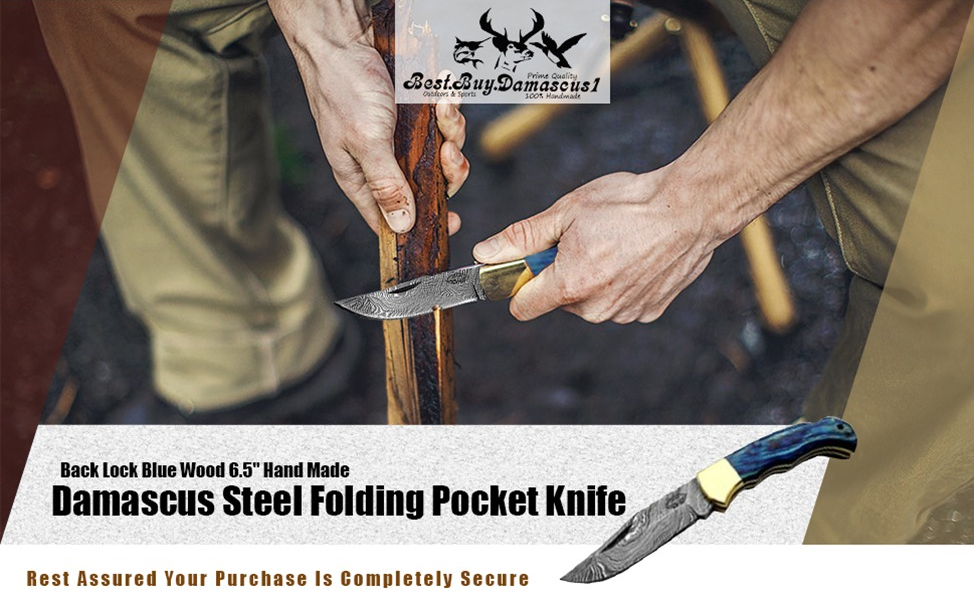The Timeless Beauty of Damascus Knives: Craftsmanship, History, and Enduring Elegance

Damascus knives have captivated the world with their timeless beauty and unmatched performance. As bladesmiths meticulously layer, fold, and forge steel into these exquisite knives, they create not just tools but masterpieces that blend artistry, history, and craftsmanship. In this article, we embark on a deeper exploration ofDamascus knives, shedding light on their history, the intricate forging process, their contemporary relevance, and why they remain prized possessions for chefs, collectors, and enthusiasts alike.
1. The Ancient Origins of Damascus Steel
Historical Reverence
The origins of Damascus steel can be traced back to ancient times, where the art of crafting these extraordinary blades emerged in the Near East, notably in the city of Damascus, Syria. Blades forged using these techniques were revered for their unparalleled sharpness, durability, and distinctive patterns.
The Mysterious Composition
One of the enduring mysteries of Damascus steel lies in its composition. While historical records suggest it was often made from a blend of iron and steel, the exact formula and techniques used by blacksmiths to create this legendary steel remain closely guarded secrets. The alchemical nature of Damascus steel adds to its mystique.
2. The Craftsmanship of Damascus Knives
Layering and Folding
The hallmark of Damascus knives lies in their mesmerizing patterns, created through the meticulous layering and folding of multiple sheets of metal. Each fold infuses the blade with more layers, resulting in complex and breathtaking patterns. The process requires not just skill but also patience and precision.
Heat Treatment and Tempering
Heat treatment and tempering are critical steps in the creation of Damascus knives. The blade is heated to precise temperatures and then rapidly cooled, a process known as quenching. This imparts the blade with hardness while maintaining its flexibility. This delicate balance ensures that Damascus knives are not only visually striking but also high-performing tools.
3. The Unique Aesthetics of Damascus Knives
Intricate Patterns
The mesmerizing patterns found on Damascus knives are a testament to the blacksmith’s artistry. The patterns can take on a variety of forms, from flowing waves to bold ladder-like designs. Each knife tells a unique story through its patterns, and the process of creating them is an art form in itself.
Etching and Contrast
To enhance the visibility of these patterns, the blade is often subjected to an etching process. Acid is applied to the surface, darkening the background and making the pattern stand out in stark contrast. The result is a blade that not only performs with precision but also boasts stunning aesthetics.
4. The Versatility of Damascus Knives
Champion in the Kitchen
In the culinary world, Damascus knives have earned a special place of honor. Their exceptional sharpness and durability make them the preferred choice of professional chefs and home cooks alike. These knives excel in slicing, dicing, and chopping a wide range of ingredients with surgical precision. In addition to their performance, their exquisite appearance adds an element of art to the culinary experience.
Collectors’ Trophies
Beyond their practical utility, Damascus knives have a strong following among collectors. Each knife is a unique piece of art, crafted by skilled artisans. Collectors often seek out limited-edition or custom Damascus knives, valuing them not just as tools but as investments and works of art that can be passed down through generations.
5. The Modern Evolution of Damascus Knives
Innovation Meets Tradition
While traditional Damascus steel forging techniques remain revered, modern innovation has also influenced the creation of Damascus knives. Contemporary bladesmiths utilize advanced materials and technologies, such as powdered metallurgy and laminated steel, to produce knives that mimic the appearance of traditional Damascus while offering enhanced performance and consistency.
Performance and Durability
Modern Damascus knives often feature high-quality stainless steel, offering superior corrosion resistance and edge retention. These knives retain the aesthetic beauty of Damascus patterns while meeting the demands of today’s users, who expect both form and function from their cutlery.
- Caring for Damascus Knives: Preserving Beauty and Functionality
7. The Rise of Custom Damascus Knives: Artisanal Excellence
- The appreciation for Damascus knives has spurred the growth of custom knife making, where skilled artisans create bespoke pieces tailored to the unique preferences of customers. These custom creations are often considered the pinnacle of knife craftsmanship, combining the allure of Damascus steel with personalized designs. Customers can collaborate with artisans to select specific patterns, handle materials, and other customizations, resulting in knives that are not just functional tools but also highly individualized works of art.
8. Damascus Knives in Culinary Competitions: Precision and Prestige
- The world of culinary competitions, where precision and presentation are paramount, has seen an increased preference for Damascus knives. Chefs participating in prestigious events often choose these knives for their exceptional sharpness and exquisite appearance. Beyond their performance benefits, wielding a Damascus knife can also add a touch of prestige to a chef’s presentation, making it a symbol of culinary excellence.
9. The Educational Value of Damascus Knives: Learning the Craft
- The art of crafting Damascus knives has sparked educational interest, with aspiring bladesmiths eager to learn the intricate forging techniques. Many workshops and schools offer courses in the traditional methods of creating Damascus steel and knife making. These educational programs ensure that the time-honored craft is passed down to future generations, preserving the legacy of Damascus knives for years to come.
10. Damascus Knives and Sustainability: A Time-Honored Craft with Modern Relevance
- In an era where sustainability is a growing concern, the longevity of Damascus knives stands as a testament to their eco-friendly nature. These knives, built to last for generations, reduce the need for constant replacements, minimizing waste. Additionally, their timeless beauty encourages users to take good care of them, further extending their lifespan. The enduring appeal of Damascus knives aligns with the principles of sustainability, as they exemplify the idea of investing in quality tools that withstand the test of time.
Owning a Damascus knife requires responsible care to maintain its beauty and functionality. Proper cleaning, drying, and regular honing are essential to ensure that the blade remains sharp and pristine. Knife enthusiasts understand that caring for a Damascus knife is not just a task; it’s a commitment to preserving a work of art.

Conclusion: Damascus Knives – Where Art Meets Utility
In the world of cutlery, Damascus knives stand as a testament to the enduring fusion of art and utility. Their rich history, intricate patterns, and superior performance have made them cherished possessions of chefs, collectors, and enthusiasts around the globe. As technology and tradition continue to intersect in the crafting of Damascus knives, their legacy as timeless blades of exceptional elegance and function remains secure. Whether gracing the kitchen of a culinary artist or occupying a place of pride in a collector’s display, Damascus knives will forever symbolize the marriage of beauty and utility, proving that in the world of blades, true craftsmanship endures through the ages.




